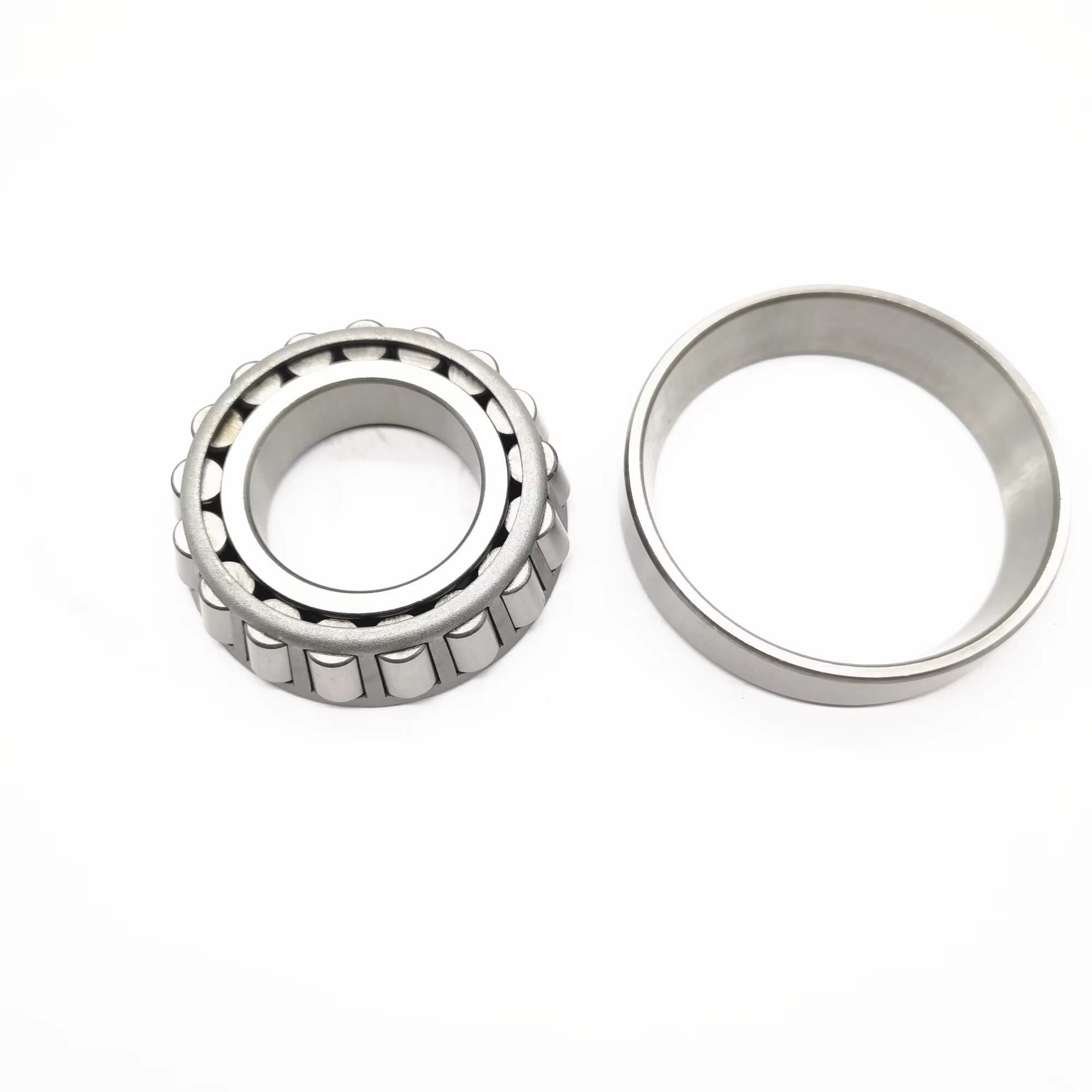Como os Sensores de Oxigênio Otimizam o Desempenho do Motor por meio do Controle da Relação Ar-Combustível
A Ciência por Trás dos Sensores de Oxigênio e a Regulação da Relação Ar-Combustível (14,7:1)
Os sensores de oxigênio são basicamente os olhos e ouvidos dos motores modernos, verificando constantemente quanto oxigênio permanece nos gases de escape para que o motor possa continuar funcionando na mágica proporção de 14,7 partes de ar para 1 parte de combustível, necessária para a maioria dos veículos movidos a gasolina. Acertar essa proporção significa uma queima melhor do combustível e menos emissões nocivas no ar. Esses pequenos dispositivos enviam sinais elétricos entre aproximadamente 0,1 e 1 volt, dependendo do que detectam, e isso informa ao cérebro computadorizado do carro (chamado ECU) se deve injetar mais ou menos combustível nos cilindros do motor quase instantaneamente. Algumas pesquisas recentes do ano passado mostraram que carros com sensores de oxigênio funcionais consomem cerca de 12 por cento menos combustível do que modelos mais antigos que apenas estimavam as quantidades de combustível sem esse tipo de sistema de feedback instantâneo.
Melhorando a Eficiência de Combustível com Feedback em Tempo Real do Sensor de Oxigênio
Os sensores de oxigênio mais recentes podem ajustar até dez vezes a cada segundo, afinando com precisão a quantidade de combustível injetada com base no que está acontecendo no motor. Quando o motorista pisa no acelerador, esses sensores inteligentes ajudam a manter o consumo de combustível sob controle e também reduzem a queima desnecessária quando o carro está apenas parado em marcha lenta. De acordo com alguns testes realizados pela Agência de Proteção Ambiental, veículos equipados com sensores O2 em bom funcionamento tendem a apresentar um rendimento de combustível entre 5 e 15 por cento melhor ao longo dos primeiros cem mil quilômetros, em comparação com veículos cujos sensores já começaram a falhar com o tempo. Essa diferença se torna significativa rapidamente para qualquer pessoa que acompanhe seus gastos mensais com combustível.
Melhorando a Eficiência da Combustão por meio de Tempos Rápidos de Resposta do Sensor de Oxigênio
Sensores de zircônia que operam em alta velocidade podem atingir sua temperatura de trabalho em apenas 20 segundos, tornando-os ideais para controle em malha fechada desde as primeiras partidas do motor, mesmo quando está frio. Esses sensores também respondem muito rapidamente, em menos de 100 milissegundos, detectando mudanças nos níveis de oxigênio quase imediatamente. Isso significa que a mistura ar-combustível permanece equilibrada mesmo quando o motorista abre o acelerador abruptamente. O tempo de resposta rápido ajuda a reduzir a combustão incompleta, um fator responsável por cerca de um quarto de todas as emissões de partículas, segundo modelos mais antigos de sensores relatados pela SAE International em 2023.
Consequências do Controle Inadequado da Mistura: Condições Leve vs. Rica Devido a Sensores Com Falha
| Condição | Tensão do Sensor de Oxigênio | Impacto no Motor | Riscos de Longo Prazo |
|---|---|---|---|
| Lean | <0,45V | Falhas de ignição, hesitação | Arranhões na parede do cilindro |
| Rica | 0,45V | Velas de ignição sujas | Dano no conversor catalítico |
Sensores defeituosos custam aos motoristas em média 740 dólares anualmente em contas de reparo e consumo excessivo de combustível (Instituto Ponemon 2023). O diagnóstico tardio acelera o desgaste de anéis de pistão e válvulas de escape em 40% em comparação com motores que possuem substituição proativa do sensor O2.
O Papel dos Sensores de Oxigênio na Redução de Emissões e Proteção do Conversor Catalítico
Como o Monitoramento Preciso de Oxigênio Permite um Controle Eficiente de Emissões Pós-Combustão
Ao manter a relação ar-combustível de 14,7:1, os sensores de oxigênio garantem que o conversor catalítico opere com eficiência. Desvios de apenas ±0,5% podem aumentar as emissões de hidrocarbonetos (HC) em até 30% (SAE International 2022). Dados em tempo real enviados à UCE permitem correções imediatas, reduzindo as emissões de óxidos de nitrogênio (NOx) e monóxido de carbono (CO) em 65–85% em comparação com sistemas em malha aberta.
Protegendo o Conversor Catalítico por meio do Desempenho Estável do Sensor de Oxigênio
Sensores instáveis perturbam o equilíbrio estequiométrico, expondo o catalisador a estresse térmico e químico. Misturas pobres causam superaquecimento; misturas ricas levam à formação de depósitos de combustível não queimado. Um estudo de 2023 constatou que o desempenho defeituoso dos sensores reduz a vida útil do catalisador em 4 a 7 anos, aumentando significativamente os custos de substituição a longo prazo.
Avanços: Sensores de Oxigênio de Banda Larga para Conformidade com Emissões em Tempo Real
Os sensores de oxigênio wideband podem medir com precisão as relações ar-combustível entre 10:1 e 20:1 com margem de erro inferior a 1%, o que ajuda a cumprir regulamentações rigorosas, como as normas Euro 6 e EPA Tier 4. Esses sensores respondem muito mais rapidamente do que os modelos antigos de zircônia, normalmente em 0,1 a 0,2 segundos, tornando-os extremamente importantes para híbridos modernos e veículos com tecnologia stop-start. Alguns testes em condições reais indicam que veículos equipados com esses sensores avançados reduzem as emissões de óxidos de nitrogênio em quase 92% logo após a partida a frio, algo que faz grande diferença em áreas urbanas, onde partidas a frio ocorrem com frequência ao longo do dia.
Impacto dos sensores de oxigênio defeituosos na confiabilidade e no desempenho do motor
Sintomas de sensores de oxigênio com falha: marcha lenta irregular, baixa eficiência de combustível e falhas no motor
Sensores de oxigênio com mau funcionamento comprometem a estabilidade do motor por meio de cálculos incorretos da mistura ar-combustível. Sintomas comuns incluem:
- Marcha lenta irregular : Ajustes erráticos da mistura causam combustão instável e vibrações perceptíveis em repouso
- Degradação do consumo de combustível : Sinais imprecisos levam a UCE a assumir misturas ricas, aumentando o consumo de combustível em 15–25% na condução urbana
- Mau contato : Condições excessivamente pobres ou ricas durante a aceleração resultam em combustão incompleta e falhas de ignição nos cilindros
Resposta degradada do sensor sob carga: Efeitos no desempenho do acelerador e na dirigibilidade
Sob carga, motores modernos dependem dos sensores de oxigênio para atualizar os ajustes de combustível a cada 50–100 milissegundos. Quando a resposta do sensor diminui além de 300 milissegundos, isso leva a:
- Atraso no acelerador durante ultrapassagens
- Flutuações de potência em subidas
- Hesitação da transmissão no trânsito
Estudo de caso: Diagnóstico de problemas no motor relacionados ao feedback atrasado do sensor O2
Uma análise de 2023 de 82 veículos com problemas recorrentes de desempenho revelou que 73% tinham sensores de oxigênio a montante com comutação atrasada de contagem cruzada (resposta de pobre para rico de 400 ms). Após a substituição:
| Metricidade | Melhoria |
|---|---|
| Suavidade da aceleração | 68% |
| Eficiência do combustível | 22% |
| Conformidade com Emissões | 41% |
| Esses resultados destacam como a manutenção oportuna dos sensores preserva a resposta do motor e reduz os custos operacionais. |
Vida Útil do Sensor de Oxigênio, Fatores de Degradação e Práticas Recomendadas de Manutenção
Vida Útil Típica do Sensor de Oxigênio: 60.000–90.000 Milhas e Sinais de Envelhecimento
A maioria dos sensores de oxigênio permanece eficaz por 60.000–90.000 milhas antes da queda de desempenho. Ambientes severos—como temperaturas extremas e alta umidade—aceleram o desgaste, com pesquisas indicando que a evaporação do eletrólito em sensores eletroquímicos pode encurtar a vida útil em até 40%. Os primeiros sinais de alerta incluem:
- Luz de aviso do motor (CEL) com códigos P0171 (sistema pobre) ou P0172 (sistema rico)
- Queda no consumo de combustível superior a 15% em relação à linha de base
- Funcionamento irregular em marcha lenta ou hesitação durante a aceleração
Causas Comuns de Degradação e Falha do Sensor de Oxigênio
Contaminantes são a principal causa de falha do sensor:
- Vazamentos de óleo/refrigerante : Resíduos de silicone ou fosfato revestem os elementos sensores
- Combustível de baixa qualidade : Aditivos como chumbo ou enxofre envenenam as superfícies catalíticas
- Dano físico : Detritos da estrada ou chicotes de fiação corroídos
Fatores que Influenciam a Longevidade do Sensor de Oxigênio: Contaminação por Óleo, Qualidade do Combustível e Condições de Operação
| Fator | Severidade do Impacto | Estratégia de Prevenção |
|---|---|---|
| Dirigir em percursos curtos | Alto | Ciclos mensais de condução em estrada |
| Exposição ao sal | Moderado | Lavagens do assoalho após o inverno |
| Modificações aftermarket | Variável | Reprogramação da ECU para calibração da relação ar-combustível |
Variantes com sensores aquecidos duram 30% mais em climas frios, mas permanecem sensíveis à instabilidade de tensão.
Estratégias de Manutenção Preventiva: Diagnósticos Regulares e Substituição Oportuna para Prolongar a Vida do Motor
A manutenção eficaz inclui:
- Varreduras semestrais do OBD-II para detecção precoce de falhas
- Substituir sensores aos 80% da vida útil especificada pelo fabricante
- Verificar a relação ar-combustível por meio de dados em tempo real após a substituição
Adiar a substituição pode danificar o catalisador, onde os reparos custam em média 2.300 dólares — seis vezes o custo da manutenção preventiva.
Perguntas frequentes
Por que a proporção ar-combustível de 14,7:1 é importante?
A proporção ar-combustível de 14,7:1 é importante porque garante uma eficiência ideal de combustão, reduzindo poluentes e maximizando o desempenho do motor.
Como os sensores de oxigênio afetam o consumo de combustível?
Os sensores de oxigênio afetam o consumo de combustível ao fornecer feedback em tempo real sobre a mistura ar-combustível, permitindo que a ECU ajuste a injeção de combustível para obter eficiência ideal.
Quais são os sinais de um sensor de oxigênio com falha?
Sinais de um sensor de oxigênio com falha incluem marcha lenta irregular, redução na economia de combustível, falhas no motor e luz de aviso do motor acesa.
Com que frequência os sensores de oxigênio devem ser substituídos?
Os sensores de oxigênio devem ser substituídos tipicamente a cada 60.000 a 90.000 milhas, dependendo das condições do veículo e do tipo de sensor.
Sumário
-
Como os Sensores de Oxigênio Otimizam o Desempenho do Motor por meio do Controle da Relação Ar-Combustível
- A Ciência por Trás dos Sensores de Oxigênio e a Regulação da Relação Ar-Combustível (14,7:1)
- Melhorando a Eficiência de Combustível com Feedback em Tempo Real do Sensor de Oxigênio
- Melhorando a Eficiência da Combustão por meio de Tempos Rápidos de Resposta do Sensor de Oxigênio
- Consequências do Controle Inadequado da Mistura: Condições Leve vs. Rica Devido a Sensores Com Falha
- O Papel dos Sensores de Oxigênio na Redução de Emissões e Proteção do Conversor Catalítico
-
Impacto dos sensores de oxigênio defeituosos na confiabilidade e no desempenho do motor
- Sintomas de sensores de oxigênio com falha: marcha lenta irregular, baixa eficiência de combustível e falhas no motor
- Resposta degradada do sensor sob carga: Efeitos no desempenho do acelerador e na dirigibilidade
- Estudo de caso: Diagnóstico de problemas no motor relacionados ao feedback atrasado do sensor O2
-
Vida Útil do Sensor de Oxigênio, Fatores de Degradação e Práticas Recomendadas de Manutenção
- Vida Útil Típica do Sensor de Oxigênio: 60.000–90.000 Milhas e Sinais de Envelhecimento
- Causas Comuns de Degradação e Falha do Sensor de Oxigênio
- Fatores que Influenciam a Longevidade do Sensor de Oxigênio: Contaminação por Óleo, Qualidade do Combustível e Condições de Operação
- Estratégias de Manutenção Preventiva: Diagnósticos Regulares e Substituição Oportuna para Prolongar a Vida do Motor
- Perguntas frequentes
 EN
EN
 AR
AR
 FR
FR
 KO
KO
 PT
PT
 RU
RU
 ES
ES


